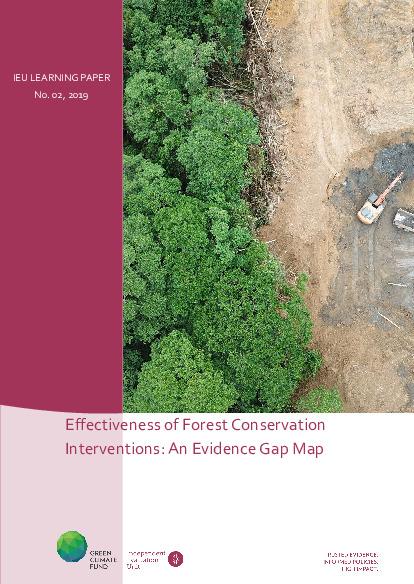Evidence gap map: Forestry
Evidence gap map: Forestry
This evidence gap map expanded upon a previous study conducted by the International Initiative for Impact Evaluation related to forest conservation interventions in low- and middle-income countries. This review updated evidence for the period 2016 to mid-2018 and synthesized this with the coverage of the previous evidence review (1990-2015).
The evidence gap map answered the following question: What evidence is there to inform environmental and socioeconomic outcomes of different forest conservation interventions in low- or middle-income countries?
Key documents

Evidence gap map: Effectiveness of forest conservation interventions
December 2019
This evidence gap map expanded upon a previous study conducted by the International Initiative for Impact Evaluation related to forest conservation interventions. This review updated evidence for the period 2016 to mid-2018 and synthesized this with the coverage of the previous evidence review (1990-2015).